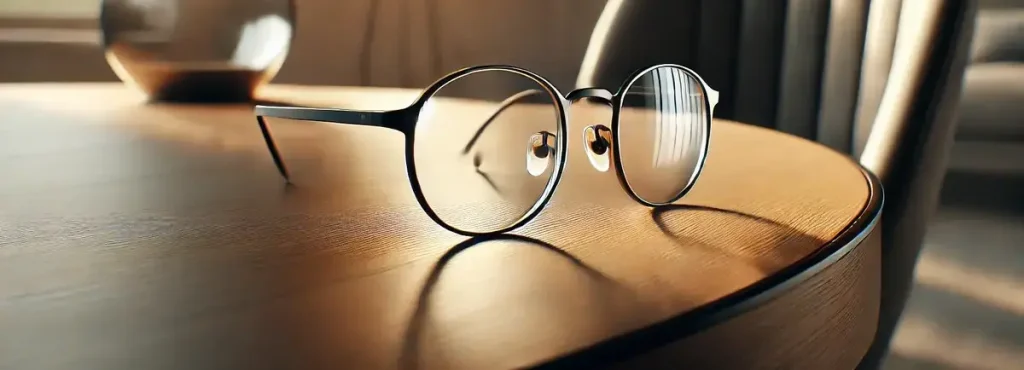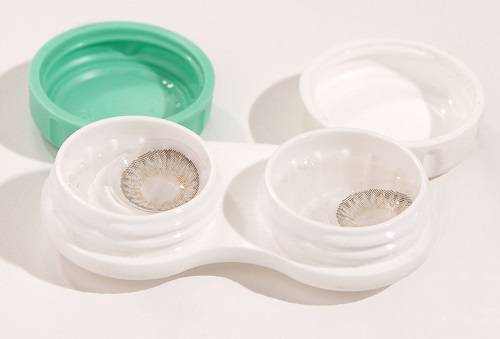When selecting eyeglass lenses, understanding the differences between polycarbonate and Trivex materials is essential for optimal vision and comfort. Both materials offer unique benefits, and your choice should align with your specific visual needs and lifestyle.
Price Comparison: Polycarbonate vs. Trivex Lenses
This chart compares the average price range of polycarbonate and Trivex lenses. Trivex lenses tend to be more expensive due to their superior optical clarity and durability.
Understanding Polycarbonate Lenses
Polycarbonate lenses have been a popular choice since their introduction in the 1980s. Originally developed for aerospace applications, they are known for their durability and lightweight design.
One of the key advantages of polycarbonate lenses is their high impact resistance, making them an ideal choice for safety glasses, children’s eyewear, and individuals with active lifestyles. Their lightweight nature also ensures all-day comfort, reducing strain on the nose and ears.
Additionally, polycarbonate lenses provide built-in UV protection, shielding the eyes from harmful ultraviolet rays. This makes them a great option for those frequently exposed to the sun.
However, polycarbonate lenses do have some drawbacks. They have a lower Abbe value, which can lead to minor chromatic aberrations, resulting in slight color distortions. Some wearers may notice subtle fringes of color around objects, though this effect is minimal for most users.
Exploring Trivex Lenses

Introduced in 2001, Trivex lenses have quickly gained popularity due to their combination of strength, clarity, and lightweight design.
Unlike polycarbonate, Trivex is produced through a cast molding process, leading to sharper optics and reduced internal stress in the lens. This results in superior optical clarity with a higher Abbe value, minimizing chromatic aberrations and offering a clearer, more natural view.
Trivex lenses are also exceptionally strong and resistant to cracks and stress fractures, making them a reliable choice for those who frequently handle their glasses or need impact-resistant eyewear.
Despite these advantages, Trivex lenses are slightly more expensive than polycarbonate. However, many users find the added comfort, clarity, and durability worth the investment.
Comparative Overview: Polycarbonate vs. Trivex
To assist in your decision-making process, here’s a comparative table highlighting key aspects of both lens materials:
| Aspect | Polycarbonate | Trivex |
|---|---|---|
| Impact Resistance | High impact resistance, making them suitable for safety applications. | Comparable impact resistance, also suitable for safety applications. |
| Optical Clarity | May have lower Abbe value, potentially leading to minor chromatic aberrations. | Higher Abbe value, offering sharper optics and reduced chromatic aberrations. |
| Weight | Lightweight, enhancing comfort for extended wear. | Even lighter than polycarbonate, providing superior comfort, especially for higher prescriptions. |
| Scratch Resistance | Generally good but may require additional coating for enhanced durability. | Naturally better scratch resistance, contributing to longer-lasting clarity. |
| Availability | Widely available with a broad range of options, including clear, AR-coated, and polarized lenses. | Increasingly available but with fewer options compared to polycarbonate. |
Impact Resistance Comparison
This chart compares the impact resistance of polycarbonate and Trivex lenses. Both materials offer high durability, with polycarbonate slightly outperforming Trivex in extreme conditions.
Real-World Application: A Case Study
Consider the case of a 32-year-old male construction worker from Houston, Texas. Given his high-risk work environment, impact-resistant lenses are crucial. After consulting with his optometrist, he opted for Trivex lenses due to their superior optical clarity and lightweight nature, enhancing both safety and comfort during long work hours.
Expert Insight
Reyus Mammadli, a healthcare advisor, recommends, “For individuals requiring high-impact resistance in their eyewear, both polycarbonate and Trivex lenses are excellent choices. However, if optical clarity and weight are primary concerns, Trivex may offer a slight advantage.”
Editorial Advice
When choosing between polycarbonate and Trivex lenses, consider your daily activities, visual requirements, and comfort preferences. Consult with an eye care professional to determine the most suitable lens material for your lifestyle, ensuring optimal vision and eye protection.





